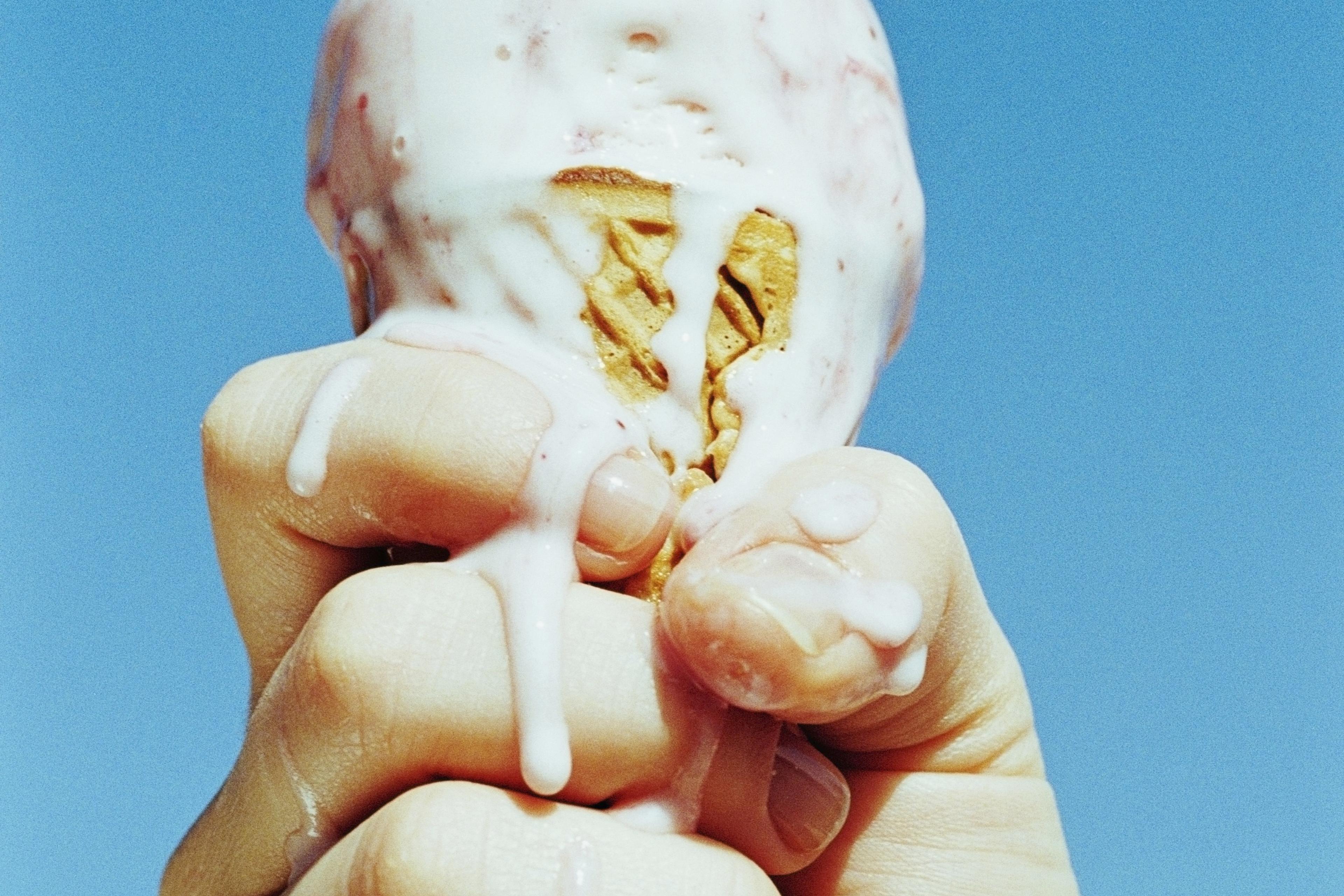Before I began treating people with eating disorders, I harboured many misconceptions about these debilitating illnesses. Initially, I subscribed to the common belief that eating disorders stemmed from a desire to lose weight – the consequence of a diet gone too far. I also assumed that most people with eating disorders primarily engaged in food restriction, driven by the wish to have a thinner body. It wasn’t until I began working with these individuals as a clinician that I came to appreciate how complex the disorders truly are.
Eating disorders are a group of brain-based illnesses that impact a person’s relationship with food and their body. Together, they affect up to one in 10 people at some point in their lives. The symptoms of an eating disorder can include a variety of behaviours: caloric restriction, purging, bingeing, laxative use, food rituals, compulsive exercise and more. And an eating disorder rarely exists in isolation, often coinciding with anxiety, depression, a substance use disorder or another condition.
A history of exposure to trauma has emerged as another common denominator for many people with eating disorders. Trauma exposure refers here to an experience characterised by a strong sense of horror or helplessness. It can be a single event, such as a sexual assault or car accident, an episodic experience like a natural disaster, or more enduring circumstances such as childhood neglect. Post-traumatic stress disorder (PTSD) is a specific diagnosis referring to a cluster of symptoms that can follow trauma, such as a strong sense of vigilance, or feeling distressed by reminders of the traumatic experience.
Research from the past 20 years has indicated a strong link between trauma and eating disorders. Specifically, findings demonstrate that, among those whose eating disorder symptoms are more severe, there is a greater likelihood of a history of trauma and a co-occurring PTSD diagnosis. Sexual abuse during childhood, the most well-researched form of trauma in people with eating disorders, has been recognised as a significant risk factor for subsequent symptom severity. In a study published in 2020, my colleagues and I found that, of more than 600 adults in residential treatment for an eating disorder, close to 50 per cent met criteria for PTSD. This is in stark contrast to a lifetime prevalence rate of 6.8 per cent for PTSD in the general population.
Many clinicians in the eating disorder field could have anecdotal insight that their clients often have trauma histories, but still be unaware of the research illuminating this association. There is a dearth of evidence-based therapies focused on this specific intersection.
Correlation is not the same as causation, and we cannot yet make any definite conclusions about whether, or to what extent, trauma directly increases eating disorder risk. Both biological and environmental factors contribute to the aetiology of eating disorders, and the interaction between these forces is complex. It is also important to keep in mind that many people with eating disorders have experienced no trauma at all. Still, the evidence so far suggests that, for many individuals, trauma can precipitate and exacerbate eating disorder symptoms – and there are many ways the dots could connect.
Onlookers to an eating disorder, such as a person’s parents, friends or partner, often feel helpless and confused. In many cases, framing the behaviours in the context of a trauma response could help the illnesses make more sense and illuminate a path toward recovery.
One of the defining features of a traumatic experience is an intense feeling of helplessness or loss of control. In the aftermath of trauma, there is often a sense of dread that something bad will happen again. Attempting to control one’s body size, shape or food intake might present a way for someone to restore a sense of control and predictability. Moreover, ‘look better, feel better’ messaging continues to be pervasive in many cultures. These factors could partly explain why symptoms of trauma and eating disorder behaviours collide.
Neuroscience helps to illuminate the profound impact that trauma can have on the psyche. Research has found that individuals with PTSD tend to show disrupted activation in certain areas of the brain. One of these regions, the insula cortex, supports the perception of sensory information such as direction, temperature and touch. Brain scans of people with eating disorders have led to similar findings of dysfunction in insula activity.
Many people with eating disorders also frequently feel emotionally and physically numb
Why does that matter? Most of us have a strong sense of our body’s relationship with hunger and fullness, just as we have an awareness of physical and emotional pain. This is called interoceptive awareness, and we use it to respond to the cues that the body sends us. When we are hungry, we seek food. When we are sad, we seek solace. When our bellies feel full, when our mood is upbeat, we go about our lives unhindered.
But individuals with eating disorders consistently report lower levels of interoceptive awareness, meaning that cues for hunger, fullness, and physical and emotional pain are not as easy for them to perceive. When they begin treatment, many have difficulty identifying the experience of hunger or fullness. In the absence of internal cues, their eating can look very mechanical. Many people with eating disorders also frequently feel emotionally and physically numb and may even experience moments of total dissociation, to the point that they don’t feel certain body parts, or feel generally uneasy in their own skin. It is common for someone with an eating disorder to grossly miscalculate the size and shape of their body when looking at it in a mirror or photograph. These deficits are often present while other parts of the brain are running at full speed.
I’ve found that, for many of my clients, the experience of trauma seems to set the stage for this dissociative state, and the eating disorder serves as a manifestation of the disconnection. When communication between the brain and the rest of the body breaks down, trouble follows. A person’s relationship with food and eating can become devoid of intuition or spontaneity. This numbness provides a perfect setting for eating disorders to thrive.
For some, eating disorder behaviours may serve as a way to regulate a nervous system that has been hijacked by trauma. As mentioned, restricting food can function as a means of feeling in control after an extreme experience of helplessness. For others, bingeing and purging provides a sense of relief and might be reinforced by a release of dopamine. Binge eating in itself can provide a sense of comfort in the midst of inner turmoil. These behaviours can represent a desperate attempt to feel something, anything at all, when one’s body feels numb and detached.
When I worked in a residential centre for eating disorders, I treated a young woman I’ll call Kylie. She had been abused by a family member throughout her childhood. Just as some people with trauma use other kinds of rules and order to establish a sense of control, Kylie weighed herself more than 30 times a day and tracked her caloric intake in a complex log. Some people with PTSD use substances to desensitise themselves, or impulsive behaviours to distract from or avoid painful internal experiences. For Kylie, this avoidance manifested as bingeing and purging. It provided her a full-body experience that distracted from the shame and anger she harboured deep down.
The ability to identify and name emotional experiences is one of the most critical emotional skills that people hone as they grow up. When someone can accurately recognise and describe states such as sadness, anger and guilt, they can act to get their needs met by asking for support, taking a break, or seeking comfort. An important part of this is physical: when I feel angry, I notice an increase in my heart rate and a tingling sensation in my hands. Guilt, on the other hand, is characterised by a deep pit in my stomach. Our ability to tune in to these physical and physiological cues allows us to make decisions that are informed by our emotions.
Many traumatised people have difficulty labelling their emotions in this way because these cues are blunted by numbness or anxiety. Research suggests that people with eating disorders also have difficulty with emotion identification, compared with the general population and those with other psychological disorders.
Shame is a major driver of disordered eating – and a common fallout from trauma
The body then takes the brunt of what the mind is not able to process. Trauma is associated with overwhelming feelings such as fear, disgust and anger. Processing these feelings requires a sense of safety and trust in one’s ability to tolerate them. But traumatised individuals often must process their pain without having the language they need to articulate it. Their response can take the form of substance use, self-harm or other impulsive or self-destructive behaviours. For someone with an eating disorder, it could mean restriction, or bingeing and purging. For Kylie, bingeing and purging was a way to process the anger and fear that had overwhelmed her as a child. It was also a means of avoiding shame.
Shame is a major driver of disordered eating – and a common fallout from trauma. When something traumatic happens, it can shake one’s belief that the world is safe and orderly. Rather than accept the reality that horrifying things can happen to blameless people, it is often easier for someone to take on the blame themselves. (If a bad thing happened to me, then I must be a bad person; paradigm restored.) This is a cognitive process called ‘assimilation’, and it has a ripple effect on one’s self-concept and sense of worth. Many of my clients who’ve experienced trauma and who blame themselves also believe that they don’t deserve to recover.
For people with an eating disorder, shame is often a core vulnerability and it’s associated with high levels of disgust directed toward the body. What’s more, when someone is inundated with shame, they might begin to organise their life around a desire to avoid the sense of exposure that comes with this feeling.
Eating disorders can be torturous, shredding a person’s ability to exist in their body with ease. They are multifaceted illnesses that can affect people of any body shape or size. But they are still too often perceived as a diet gone too far.
For those with eating disorders who also have a history of trauma, eating disorder behaviours could, in a sense, be viewed as PTSD symptoms – a means to cope with the sense of disconnection after trauma, to communicate needs, or to re-establish some semblance of control. Many of these individuals have been in and out of eating disorder treatment where the focus has been on food. When they are discharged back into their home environment, stress and triggers related to trauma could jumpstart maladaptive coping mechanisms.
There are likely many people with eating disorders who, like Kylie, would respond better to trauma treatment. I’ve found both anecdotally and empirically that focusing on symptoms of PTSD using evidence-based treatment protocols – such as trauma-informed cognitive behavioural therapy, prolonged exposure, and cognitive processing therapy – can lead to positive changes in eating disorder behaviours. As someone feels safer in their own skin and more resilient in the face of trauma triggers, the hypervigilance associated with PTSD diminishes, and with it the need to block out or distract from painful internal experiences.
The lack of attention given to the intersection of these illnesses weakens the ability of clinicians, families and other support-givers to effectively respond to them. It is critical for people like Kylie that we gain further insight into the relationship between trauma and eating disorders – and implement interventions that target the places where they overlap.








